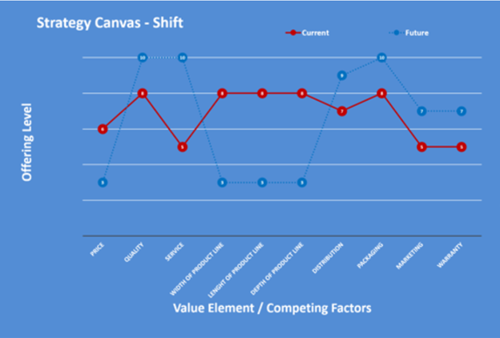In B2B, our proximity to our customers is our superpower. Yet, for many, customer interviews may seem like a nice to have. In reality, B2B customer interviews are one of the simplest and most impactful ways for businesses of any size to gain real insights into what their customers need, value, and hope to achieve.
In a recent episode of We Do B2B, BlueOcean’s own Freyja Spaven explored customer interviews, emphasising how in B2B, we can use these conversations to make informed decisions, improve customer satisfaction, and navigate growth challenges. Her key message? Effective customer interviews don’t need to be complicated - but they do need to be intentional.
Make sure to listen to the full podcast here.
Running a B2B customer interview doesn’t require a marketing background or fancy tech. With the following structured approaches and tools, you can ensure that each conversation is productive, insightful, and directly relevant to your business goals.
1. Start with a Clear Goal Using "Jobs to be Done"
Every customer has a "job" they’re trying to accomplish with your product or service—whether it’s solving a problem, saving time, or achieving a specific outcome. The Jobs to be Done framework is a better way to conduct interviews. Freyja emphasises that understanding this motivation can help you shape your interview questions to uncover real needs: “Ask yourself, what outcome does the customer want? Why did they choose us to help them get there?”
To put this into action, frame your questions around the customer’s goals:
- "What problem does our product help you solve?"
- "What were you hoping to achieve when you started using our service?"
- "How has our product helped you accomplish your goals?"
These questions keep the conversation focussed on the customer’s perspective and can reveal deeper insights into how your offering aligns with their needs. You can read more about turning customer input into innovation in the HBR article by Tony Ulwick of the same title.
2. Use the Strategy Canvas to Guide Conversations and Gather Data
The Strategy Canvas, adapted from the Value Proposition Design framework, is a visual tool that helps you assess your customer’s experience with your product.
Here’s what it might look like:

By using a simple scale from one to six (or seven), ranging from “strongly disagree” to “strongly agree,” you can gather both quantitative and qualitative insights in one conversation.
Learn more about how the Strategy Canvas can help with B2B customer interviews.
Freyja points out that this mixed-methods approach allows you to identify patterns in customer feedback, making it easier to spot areas that might need improvement. You can also use follow-up questions to dig deeper, like, “Can you tell us why you gave that rating?”
With this approach, you’re not only collecting valuable data, but also encouraging customers to share insights that you might otherwise miss. And by the end of the exercise, you’ll have an actionable, visual representation of what customers value.
3. Embrace a Semi-Structured, Qualitative Interview Style
Freyja recommends a semi-structured interview approach, which combines planned themes with the flexibility to explore topics as they come up naturally. "It’s important to go in with themes you want to explore but also leave room for the customer’s unique insights," she says.
To apply this approach:
- Prepare a few open-ended questions that encourage detailed answers, like "Can you describe a recent experience with our product?" or "What’s the biggest benefit you see in using our service?" If you’ve only got 30 minutes, try to stick to five or six questions—any more tends to dilute the message.
- Practice active listening by asking follow-up questions based on their responses. If they mention a challenge, ask, "Can you tell me more about that?" or "What would have improved that experience?"
Freyja suggests, whenever possible, conducting interviews in the customer’s own environment. Talking to people in their daily setting can provide valuable context, revealing details about how they use your product or service and what challenges they might face that they hadn’t mentioned directly. "Being in their space often reveals things you wouldn’t catch in a phone call - like how they use the product day-to-day or what other tools they have on hand."
Bringing It All Together
These tools - Jobs to be Done, the Strategy Canvas, and a semi-structured approach - turn B2B customer interviews into a structured yet flexible process that helps you connect directly with your customers and gain a clear understanding of their needs. By following these steps, you can uncover insights that not only enhance your customer relationships but also guide you in making better business decisions, refining your messaging, and improving your product offerings.
Freyja’s advice makes one thing clear: customer interviews are one of the most powerful tools for business owners to stay grounded in their customers' reality, deepen trust, and drive growth. With these frameworks, even the busiest B2B professionals can integrate customer feedback into their strategy.
Sometimes, an impartial view can help you get the insights you need. BlueOcean can help.
